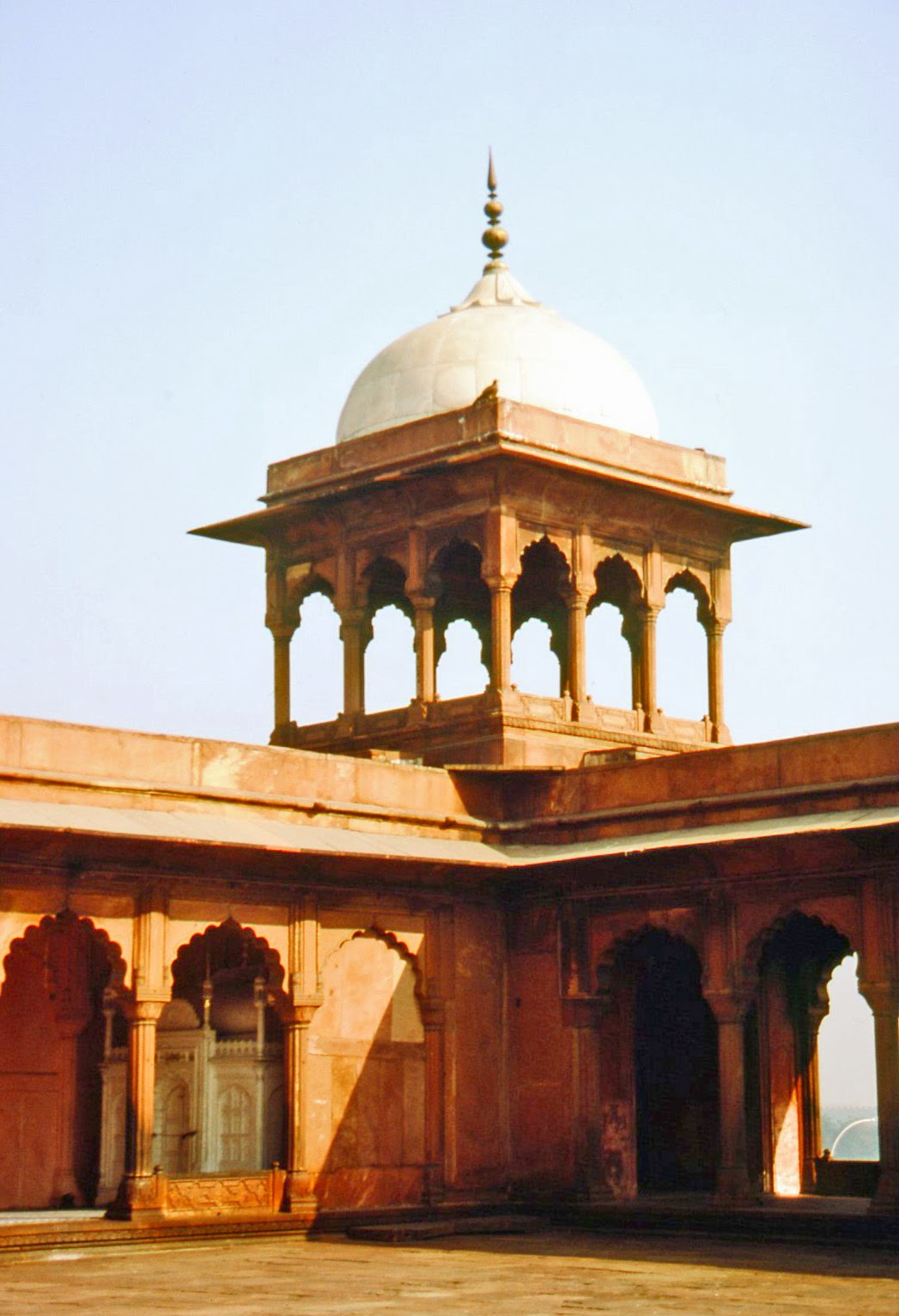Wednesday, November 30, 1983
Flew from Calcutta to New Delhi.
 |
| The Ls' apartment |
 |
| The Ls' back gate |
 |
| The back of the apartments covered with bougainvillea |
 |
| The Common of the American Compound |
 |
| Banana flower |
 |
| The US Embassy |
 |
| US Embassy courtyard |
 |
| US Embassy seal |
Thursday, December 1, 1983
 |
| Humayun Tomb entrance mosaic |
The Tomb of Humayum was built 1565-1572, designed by Mirak Mirza Ghiyas, a Persian architect, for the Mughal Emperor Humayun.
 |
| Humayun Tomb through the gateway |
 |
| Humayun Tomb doorway |
 |
| Humayun Tomb railings |
 |
| Gurdwara Damdama Sahib, a new Sikh temple |
 |
| Sikh temple interior |
 |
| Rajpath/ceremonial boulevard to the National Stadium |
 |
| India Gate |
The 42 m/138' tall India Gate was built 1921-1931, designed by Sir Edwin Lutyens as a memorial for all Indians killed in war starting with WWI.
 |
| Secretariat |
The Secretariat (1910s) was initially built for the administration of the British Indian Empire and was designed by Herbert Baker in Indo-Saracenic Revival style. After Indian independence in 1947, it became the seat of the India government.
 |
| View down Rajpath from the Secretariat |
 |
| Rashtrapati Bhavan/Presidential Residence |
Rashtrapati Bhavan/Presidential Residence (1921-1929), designed by British architect Edwin Landseer Lutyens, was originally built to be the residence of the British Viceroy of India. It was renamed when the first president of India, Rajendra Prasad, took residence in 1950.
 |
| Lakshmi Narayan Temple |
Lakshmi Narayan Temple was built 1933-1939 and was inaugurated by Mahatma Gandhi.
 |
| Lakshmi Narayan Temple |
Friday, December 2, 1983
 |
| Qutab Minar |
The 72.5 m/237.8' tall Qutab Minar/minaret is the second tallest in India, and was started in 1193 and the top story completed in 1368.
 |
| Qutab Minar detail |
 |
| Alai Darwaza/gateway to the Quwwat-ul-Islam Mosque |
 |
| Quwwat-ul-Islam Mosque |
The Quwwat-ul-Islam Mosque was built in 1198 and enlarged 1210-1235. It was the first mosque built in Delhi.
 |
| Iron Pillar |
The 7 m/23' iron pillar is remarkably rust resistant and predates the Qutab Minar.
 |
| Quwwat-ul-Islam Mosque columns |
 |
| Funambulus pennantii/Five-striped Palm Squirrels |
 |
| Dot at the meat market |
 |
| Dot at the vegetable market |
 |
| Spoices at the market |
Next: New Delhi 2.


























































